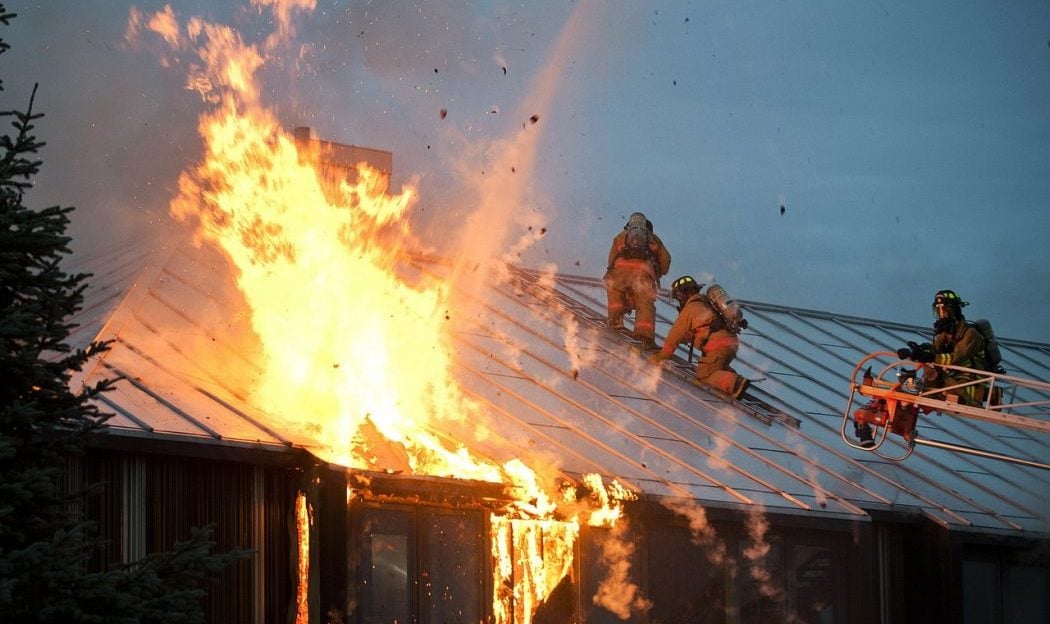It’s up to each of us to prevent fires in the home, especially with the recent statement by Ontario’s fire marshal that we’re on track to exceed last year’s fire deaths. Last year was one of the worst on record for fire-related deaths.
The risk of fire is especially high in the winter, according to Fire Prevention Canada; that’s because we heat our homes, prepare more meals indoors, and those who smoke tend to do it inside.
This is Fire Prevention Week, so here are some easy-to-follow tips to help keep you and your family safe. Print the list, put it on your fridge and check off the items where appropriate.
- If you must use a space heater, keep it three feet from combustible materials, never leave it unattended, and shut it off when you leave the house. These devices draw a lot of power, so check the cord and plug frequently to ensure they don’t overheat.
- To help prevent fires in the home, maintain your furnace including regular replacement of filters. Get the furnace professionally inspected once a year.
- If you heat with wood, clean the chimney once to twice a year, have the chimney professionally inspected every year, and use only seasoned wood to reduce the accumulation of flammable creosote. Respect clearance specifications and never allow children near the stove.
- The glass front on a gas fireplace gets hot enough to cause third-degree burns. If you don’t have a protective screen, contact the manufacturer, a fireplace retailer or even a building materials store like Lowes.
- Don’t smoke inside. Period. And fully extinguish cigarettes outside.
- Be wary of extension cords. Never put them under rugs, where they can be damaged by foot traffic, arc and cause a fire.
- Watch for signs of electrical problems including lights that dim every time you turn on an appliance, a warning that you could be overloading the circuit.
- Avoid dryer fires by cleaning the lint filter after each use and carrying out other manufacturer-recommended maintenance.
- Change the batteries in your smoke detector every year and test the detector monthly. Remember that the Ontario Building Code requires all homes including apartments to have working smoke and carbon monoxide alarms. If your rental home doesn’t comply, contact your landlord right away.
- Never leave the kitchen stove if cooking anything in grease or oil. Always have a tight-fitting lid nearby to smother a fire in a fry pan or pot.
- Have an escape plan, practise it, and make sure your doors are clear of snow and that windows aren’t frozen in case you need to exit quickly.
Fire facts
- Increased use of synthetic materials in homes means fires now spread more aggressively. Over the past 35 or so years, the time needed to escape home fires has shrunk from approximately 17 minutes to as little as three minutes.
- The Duracell Fire Safety Study in 2009 found only 22 per cent of Canadians tested their home smoke alarms monthly and 57 per cent changed the batteries once a year. That’s a lot of potentially useless alarms.
- Smoke is the cause of the majority of fire-related deaths, producing carbon monoxide and other poisons that can kill before a sleeper is even disturbed by the fire itself. Hence, working smoke alarms.
- To prevent fires in the home, remember cooking is the leading cause of home fire injuries in Canada. Along with never leaving the kitchen if something is cooking on the stove top, you can prevent fires by making sure oven mitts, dish towels, plastics and other flammables are kept well away from the stove.
- Most candle fires begin in the bedroom. In Canada, there are no legal standards for candle safety and no agency tests them for safety before they are put on the market. Never leave a candle unattended.
The above barely scratches the surface of how to prevent fires in the home. For more information, visit the sources used in preparing this article: Fire Prevention Canada and Ontario Association of Fire Chiefs.
Originally published January 9, 2018








